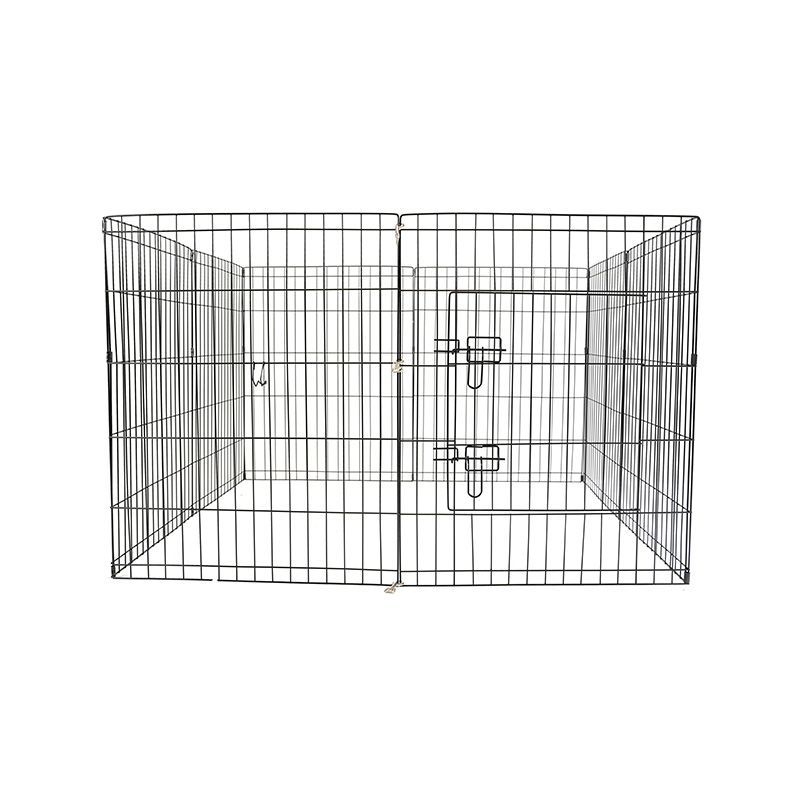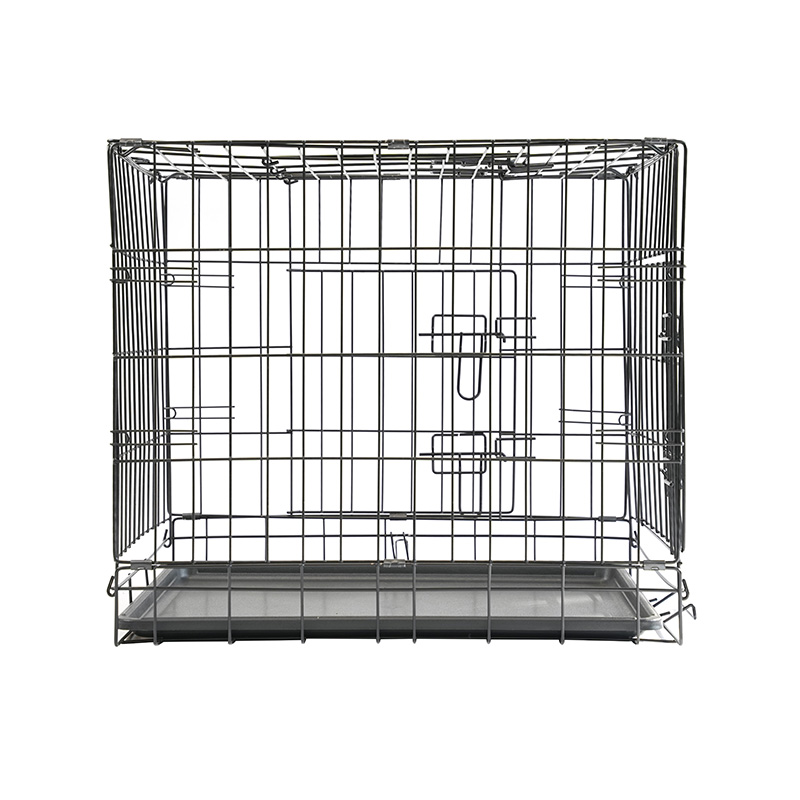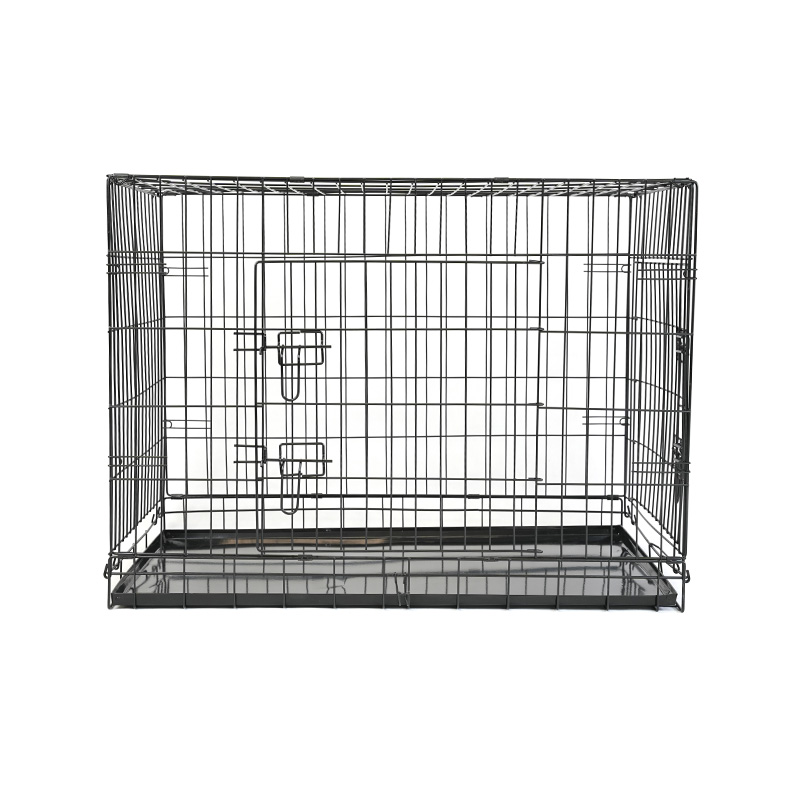- Type:
- Industry News
- Date
- 2025-Sep-08
How Can a Metal Pet Playpen Become a Safe Haven in Your Home?
Key Factors in Choosing the Right Size Metal Pet Playpen
When selecting a metal pet playpen, size is the primary factor to consider, as it directly impacts your pet's activity space and comfort. You need to determine the size based on your pet's body type, breed, and daily habits. For instance, large dogs require more spacious areas to turn around and stretch, while small dogs or cats may only need a smaller zone. Additionally, consider the placement of the playpen to ensure it fits indoor or outdoor layouts, avoiding overcrowding or wasted space. The height of the playpen is also crucial, especially for pets that are good jumpers; sufficient height can prevent escapes. Ultimately, choosing an adjustable or modular playpen that can be flexibly resized according to needs will provide longer-term suitability for your pet.
Step-by-Step Guide to Installing an Indoor Metal Dog Playpen
Installing an indoor metal dog playpen is not complicated but requires careful operation to ensure stability and safety. First, choose a flat, dry ground location to prevent slipping or floor damage. Then, clear the area of any obstacles or fragile items. Next, connect the playpen's panels or sections according to the product instructions, usually securing them with clips or screws, ensuring each connection point is firm and without looseness. If the playpen has a door or entrance, check that the switching mechanism is smooth and test the lock's reliability. After installation, gently shake the playpen to check overall stability, and add anti-slip pads or weighted bases if necessary to enhance anti-tip capability. Finally, place the playpen away from furniture or walls to prevent pets from using external forces to climb and escape.
Effective Strategies for Keeping a Metal Pet Playpen Clean and Durable
Cleaning and maintaining a metal pet playpen is key to extending its lifespan, and regular care can prevent corrosion and dirt buildup. Use mild soap water and a soft cloth to wipe the surface, avoiding abrasive cleaners or hard brushes that could scratch the coating. For stubborn stains, such as pet saliva or food residue, soak with a wet cloth first and then gently wipe away.Also, inspect the playpen's weld points and connections to ensure there are no signs of looseness or rust; if rust is found, sand it promptly and apply anti-rust paint. For outdoor use, consider adding a waterproof cover or moving the playpen to a shaded area to reduce sun and rain damage. Through these simple steps, you can maintain the playpen's hygiene and appearance, providing a clean, healthy environment for your pet.
Evaluating the Safety Performance and Design Points of a Metal Pet Playpen
Safety is a core consideration when choosing a metal pet playpen, and you need to carefully evaluate its design features to avoid potential risks. Check the material thickness and coating of the playpen to ensure it is non-toxic, chew-resistant, and has smooth edges without sharp parts to prevent pet injuries. The door lock mechanism should be designed as an escape-proof type, such as a double lock or auto-latching system, to avoid accidental openings by pets. Additionally, the bar spacing of the playpen is important; overly wide gaps may cause pets' heads or limbs to get stuck, so choose an appropriate gap based on pet size. If the playpen is for multi-pet households, consider adding dividers or expansion modules to manage interactions. Finally, test the playpen's stability and anti-tip capability, especially when pets are active, to ensure it does not easily topple over. Through these evaluations, you can select a playpen that is both safe and practical.
Training Steps to Help Dogs Adapt to a New Metal Playpen
When introducing a new metal playpen, training your dog to adapt is key to ensuring acceptance, requiring patience and positive reinforcement methods. Start by placing the playpen in an area where your dog often activities, with the door open, allowing it to explore and sniff freely without forcing entry. Place familiar toys, blankets, or food bowls inside the playpen to create positive associations, and give treats and praise when the dog voluntarily enters. Gradually increase the time spent inside the playpen, from a few minutes to longer periods, while staying nearby to reduce anxiety. If the dog shows resistance, avoid punishment and instead guide with games or rewards. Finally, establish routines, such as feeding or nap time inside the playpen, to help the dog view it as a safe space.Through gradual training, most dogs will quickly adapt and enjoy their exclusive area.


 Inquiry
Inquiry

 English
English 中文简体
中文简体 Deutsch
Deutsch





